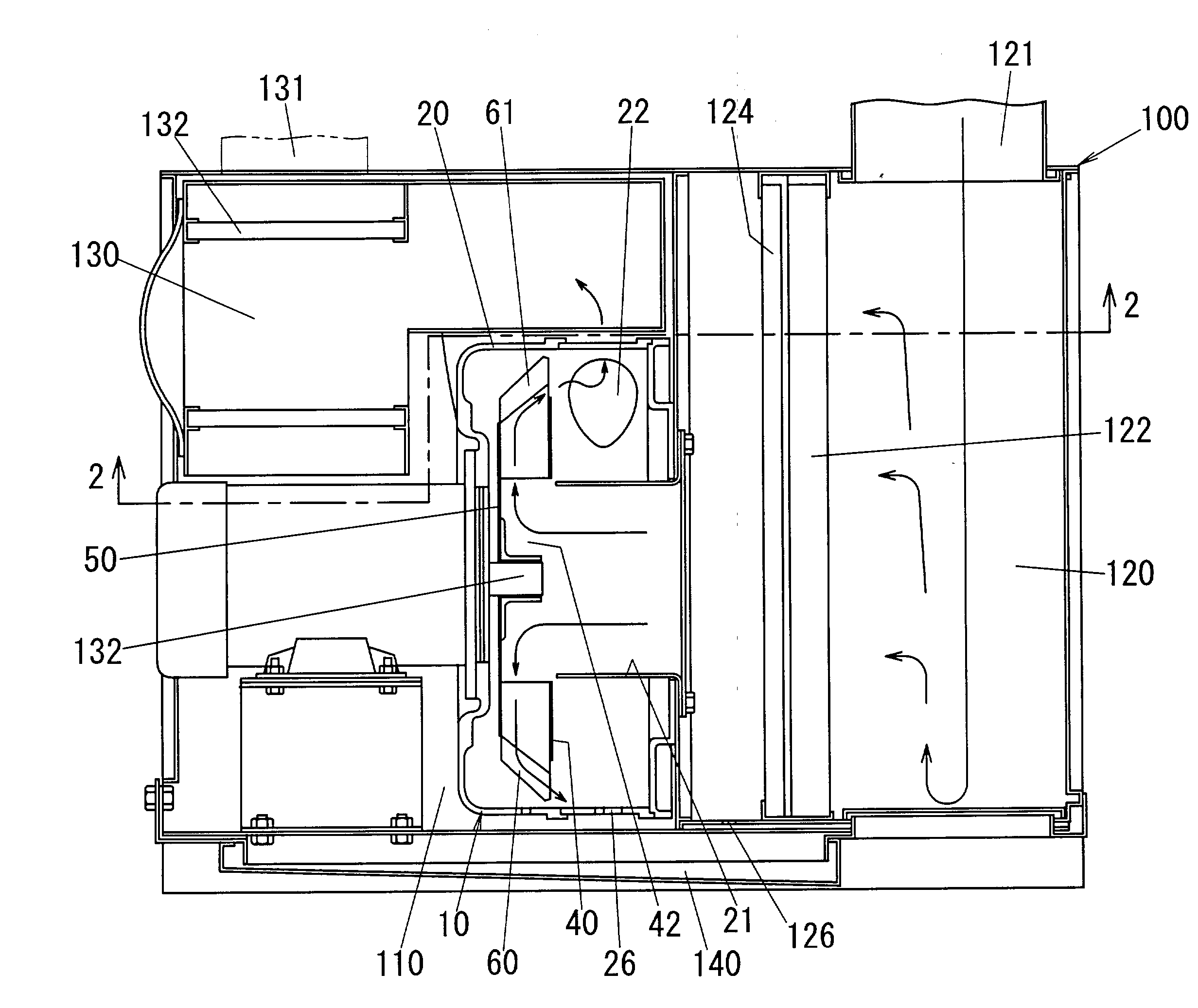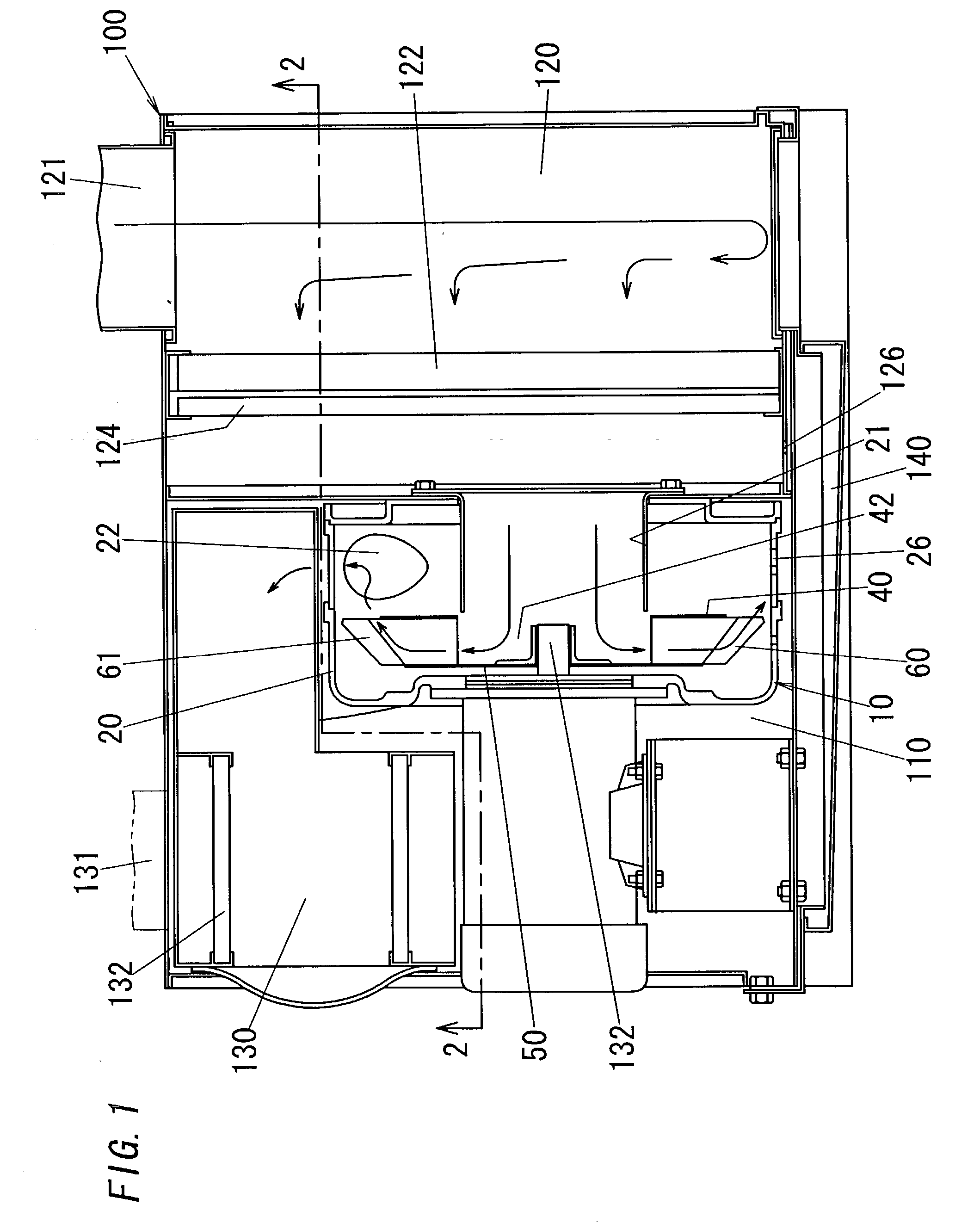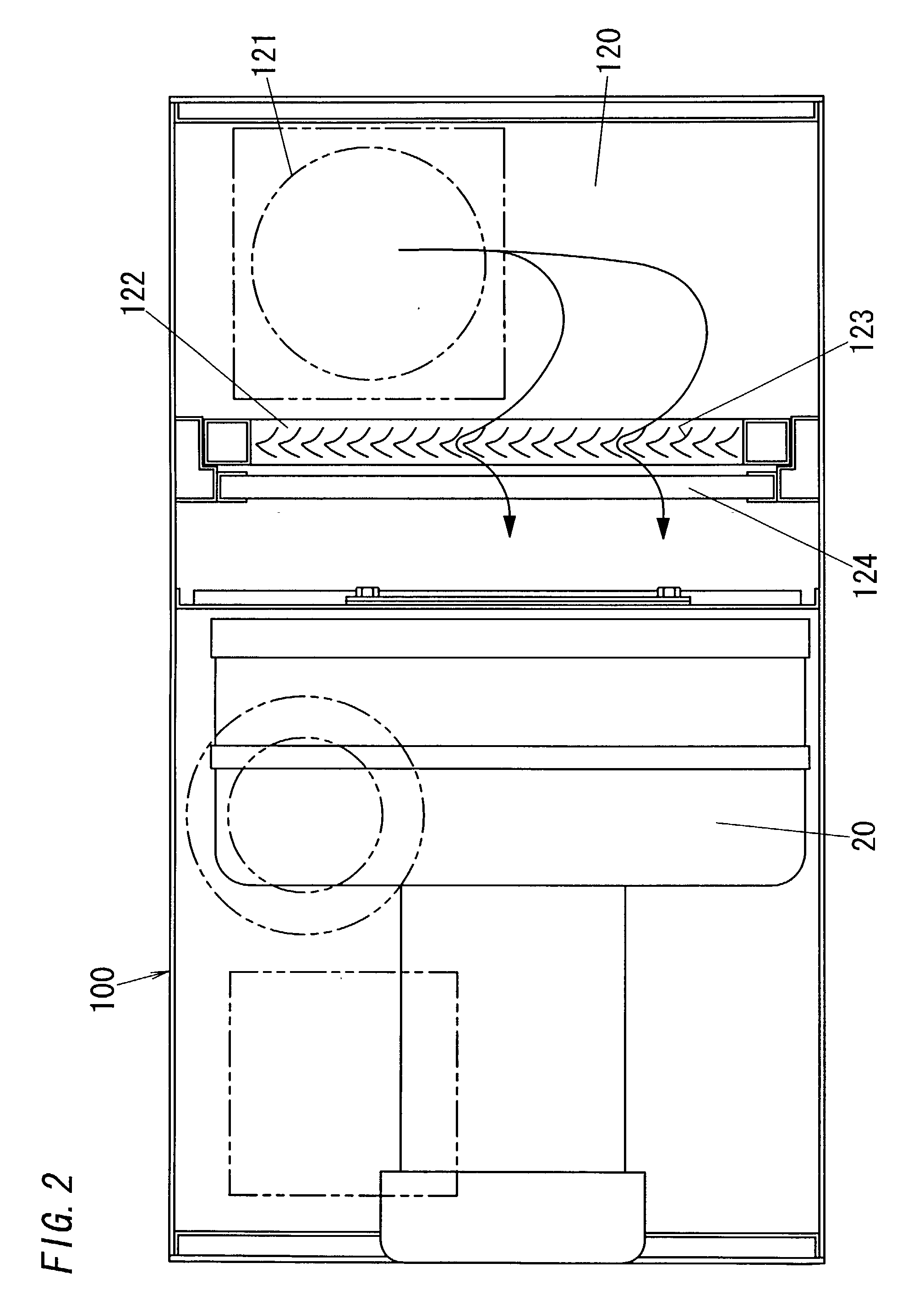Oil mist eliminator
- Summary
- Abstract
- Description
- Claims
- Application Information
AI Technical Summary
Benefits of technology
Problems solved by technology
Method used
Image
Examples
Embodiment Construction
[0019] Referring now to FIGS. 1 and 2, there is shown an oil recovery system incorporating an oil mist eliminator 10 in accordance with a preferred embodiment of the present invention. The system is adapted to be installed in a machine factory where lathes or the like cutting tools are running with an attendant creation of an oil mist, i.e., tiny oil particles spread in the atmosphere, in order to separate the oil particles from the atmosphere and collect thus separated oils for realizing a clean room environment. The system includes a housing 100 having a center chamber 110 for mounting therein the oil mist eliminator 10 which generates a forded air flow from an intake port 121 to an exhaust port 131. The housing 100 further includes a pre-treatment chamber 120 upstream of the eliminator 10 for collecting the oil-contaminated air, a silencing room 130 downstream of the eliminator for muffling a sound of driving the eliminator and at the same time filtering out minute oil particles ...
PUM
| Property | Measurement | Unit |
|---|---|---|
| Width | aaaaa | aaaaa |
| Efficiency | aaaaa | aaaaa |
| Distance | aaaaa | aaaaa |
Abstract
Description
Claims
Application Information
 Login to View More
Login to View More - R&D
- Intellectual Property
- Life Sciences
- Materials
- Tech Scout
- Unparalleled Data Quality
- Higher Quality Content
- 60% Fewer Hallucinations
Browse by: Latest US Patents, China's latest patents, Technical Efficacy Thesaurus, Application Domain, Technology Topic, Popular Technical Reports.
© 2025 PatSnap. All rights reserved.Legal|Privacy policy|Modern Slavery Act Transparency Statement|Sitemap|About US| Contact US: help@patsnap.com



